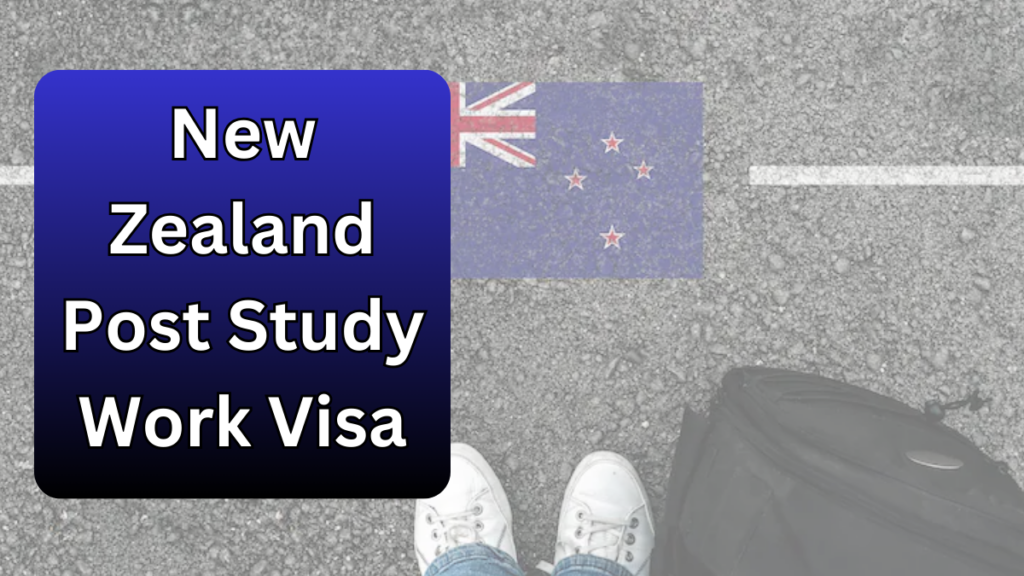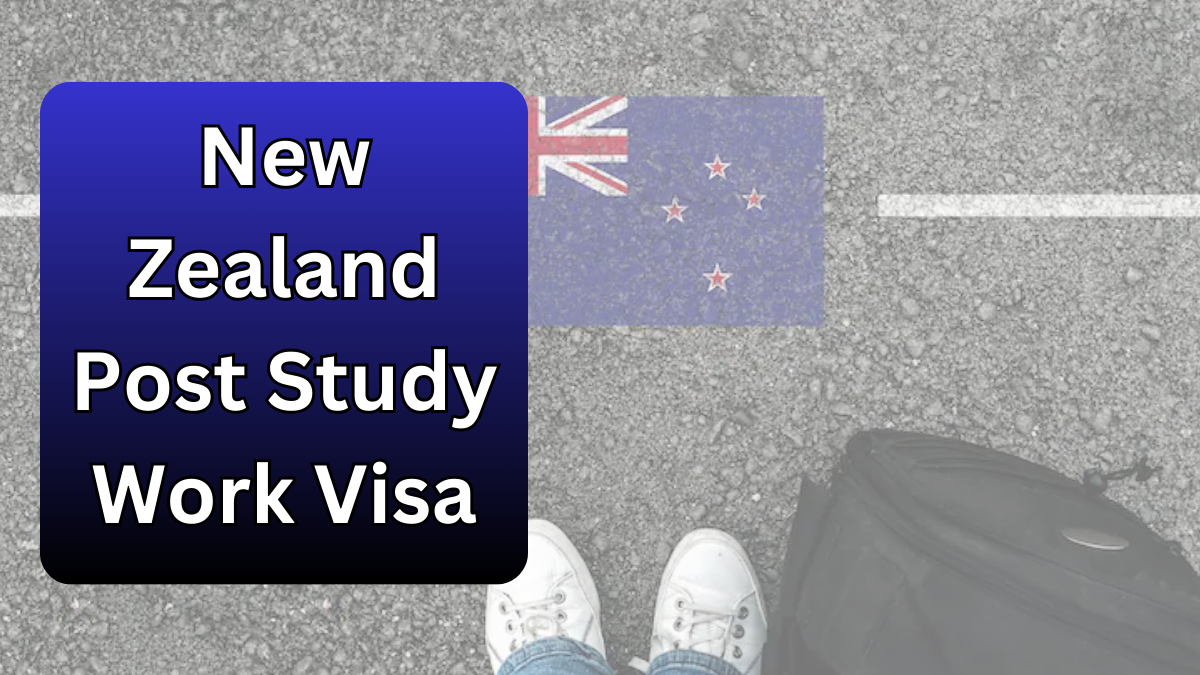The New Zealand government has introduced significant changes to its Post Study Work Visa (PSW) rules, aiming to attract international students and provide them with better job opportunities. These changes are particularly relevant for students pursuing postgraduate studies in New Zealand. If you’re considering studying in NZ, here’s everything you need to know about the latest updates and how they affect your prospects.

Understanding the New Zealand Post Study Work Visa (PSW)
The Post Study Work Visa (PSWV) is a permit issued by Immigration New Zealand (INZ) that allows international students to live and work in New Zealand after completing their education. The validity of the visa varies depending on the qualification obtained, with a maximum duration of up to three years.
Eligibility Criteria for a Post-Study Work Visa
To qualify for a PSW visa, students must meet specific eligibility requirements:
- Educational Qualification: Must have completed a Level 7 or higher qualification.
- Course Duration: The course must be at least 30 weeks in New Zealand.
- Additional Conditions: There are various other conditions, which can be checked on the official website of Immigration New Zealand.
Key Changes in the New Zealand Post-Study Work Visa Rules (November 2024)
In November 2024, Immigration New Zealand (INZ) introduced modifications to the PSW visa rules, making it easier for students to qualify for post-study work opportunities. Below are the key updates:
1. PSW Eligibility for PGDip and Master’s Students
- Previously, students who pursued a Postgraduate Diploma (PGDip) in New Zealand and then enrolled in a Master’s program had to complete at least 30 weeks of Master’s study to qualify for a PSW visa.
- Under the new rules, students who complete a 30-week PGDip and immediately enroll in a Master’s program can now apply for a Post Study Work Visa based on their PGDip alone.
- This change allows more flexibility in study choices and ensures students remain eligible for work after completing their studies.
Example:
If an Indian student enrolls in a 30-week PGDip program at a New Zealand university and then transitions to a Master’s course, they can now apply for a Post Study Work Visa based on their PGDip enrollment rather than waiting to complete 30 weeks of Master’s study.
2. Expanded List of Qualifications Eligible for a PSW Visa
The changes also impact the list of qualifications that qualify for a Post Study Work Visa:
| Qualification | Previous Requirement | New Rule |
|---|---|---|
| Secondary School Teaching | A Bachelor’s degree specializing in Science, Technology, Mathematics, or Pacific Languages was required. | Now, students can qualify without a specialization in these subjects. |
| Diploma in Engineering (Level 6) | Mechanical Engineering graduates were not eligible for PSW. | Mechanical Engineering diploma holders can now apply for a Post Study Work Visa. |
These updates broaden the scope of employment for students in critical job sectors, making New Zealand a more attractive destination for higher studies.
Why These Changes Matter for International Students?
New Zealand is emerging as a leading study destination, especially for students who previously considered Canada, Australia, or the UK. The revised PSW visa rules make it easier for students to work and gain professional experience in New Zealand.
Key Benefits of These Changes:
- More Flexibility: Students pursuing a PGDip + Master’s combo now have an easier pathway to work in New Zealand.
- Expanded Job Opportunities: With an updated list of eligible qualifications, more students can apply for a PSW visa.
- Increased Global Interest: With countries like Canada tightening their study permit rules, New Zealand presents an attractive alternative for international students.
Cost of Studying PGDip in New Zealand
Since the 30-week PGDip is now a crucial requirement for obtaining a Post Study Work Visa, understanding its cost structure is essential.
Estimated Cost of PGDip in New Zealand
| Expense | Cost Range (NZD) | Cost in INR (Approx.) |
| Tuition Fees | 25,000 – 40,000 NZD | ₹12,50,000 – ₹20,00,000 |
| Living Expenses | 1,715.4 NZD per month | ₹84,998 per month |
| Additional Costs | Varies (Rent, Transport, etc.) | Depends on lifestyle |
Students should also budget for accommodation, food, transportation, and miscellaneous expenses while planning their studies in New Zealand.
Frequently Asked Questions (FAQs)
1. How long can I stay in New Zealand with a Post Study Work Visa?
The duration of the Post Study Work Visa depends on your qualifications. It can range from one to three years based on the level of study you completed.
2. Can I switch jobs while on a Post Study Work Visa?
Yes, the Post Study Work Visa is open work in nature, meaning you can work for any employer in New Zealand and even switch jobs during its validity.
3. Is the Post Study Work Visa extendable?
No, the Post Study Work Visa is not extendable. However, if you find a job that meets the eligibility criteria, you may be able to apply for another work visa or residency.
4. What are the alternatives if I do not qualify for a PSW visa?
If you do not meet the PSW visa criteria, you can explore other options like skilled worker visas, employer-sponsored work permits, or additional studies to meet eligibility requirements.
Final Thoughts
The recent Post Study Work Visa changes bring greater flexibility and more job opportunities for international students in New Zealand. With eased qualification requirements, an expanded list of eligible programs, and affordable education options, New Zealand is positioning itself as a prime destination for students looking to study and work abroad.
If you’re considering studying in New Zealand, these updates could open new doors for you! Stay updated with official Immigration New Zealand announcements to ensure you meet all requirements and maximize your career opportunities after graduation.
Click here to learn more
Sachin is an experienced writer with a strong background in education-related content. With years of expertise in creating informative and engaging material, he covers topics such as teaching strategies, educational technology, and learning methodologies. His work aims to inspire both educators and learners, reflecting his deep understanding of the evolving education landscape.

